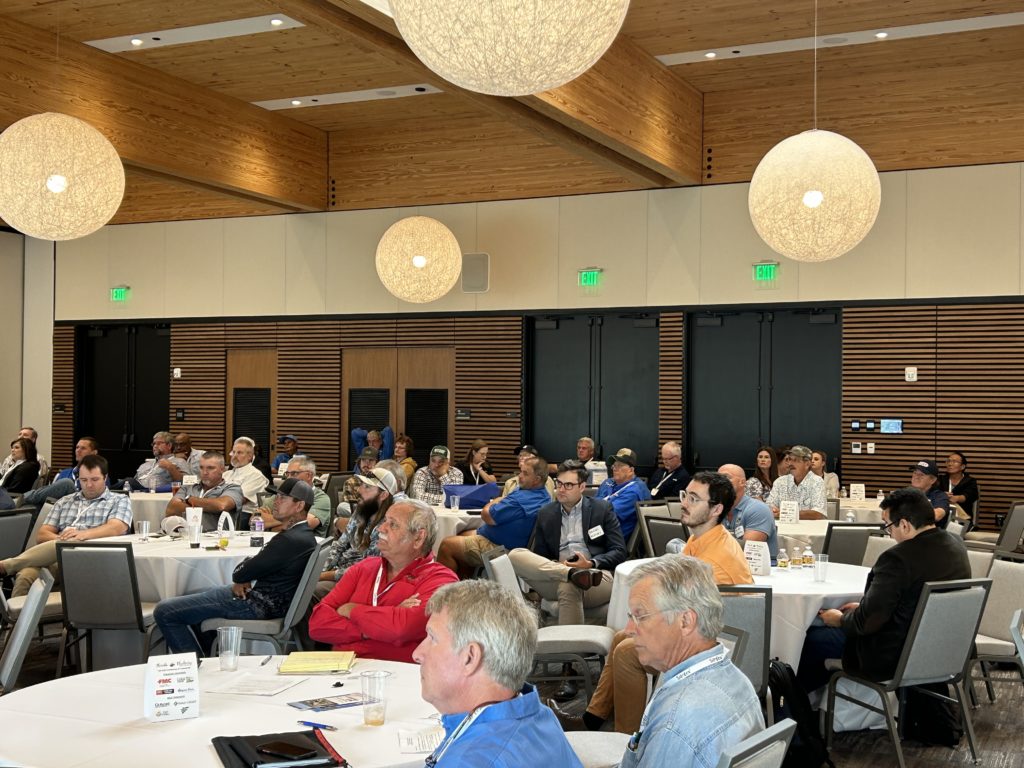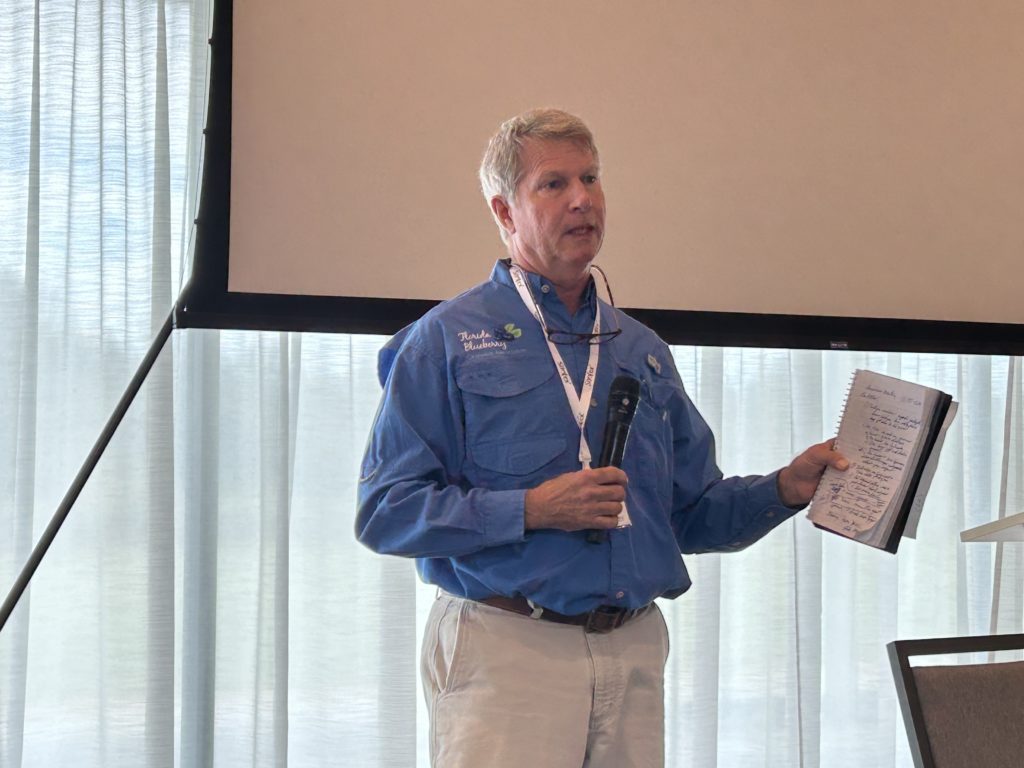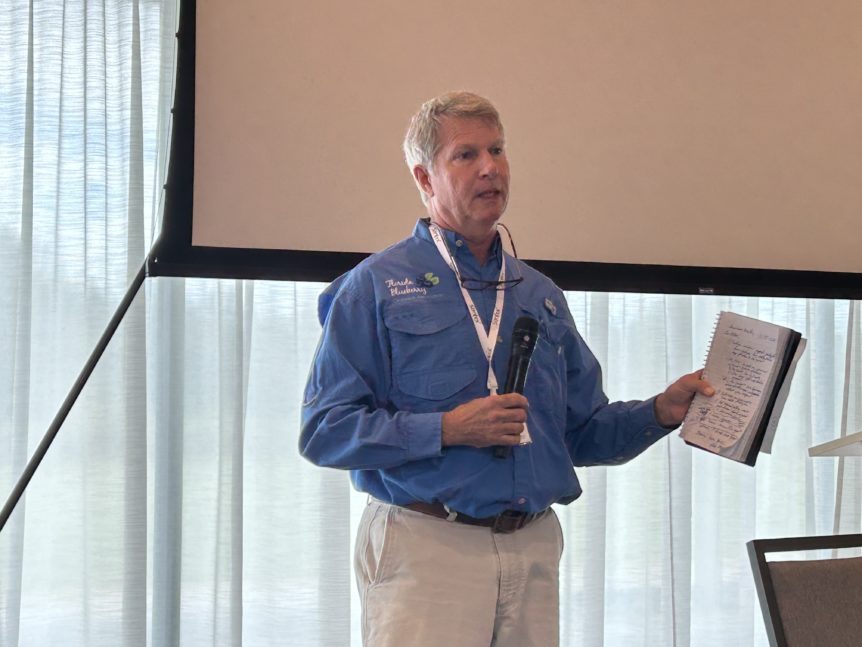By Frank Giles
Last week, the Florida Blueberry Growers Association (FBGA) hosted its annual fall meeting in Lakeland at Bonnet Springs Park and Event Center. The meeting’s education program covered a wide range of topics, including production, labor and the farm bill debate.

Leonard Park, FBGA president, noted in his welcome address that last season was a struggle for Florida’s industry. Hurricanes, a freeze and a crowded market window made for a tough season for many of the state’s blueberry growers. But he added everyone remains hopeful for a better season in 2024.
SURVEY FINDINGS
Doug Phillips, University of Florida Institute of Food and Agricultural Sciences (UF/IFAS) blueberry Extension coordinator, presented results of his annual survey on the previous season. Participation in the survey is strong, with 81% of reported blueberry acreage represented in the results. Farms in the north-central, central and southern production areas of the state are well represented.
When asked to name the highest-yielding blueberry varieties, growers put Arcadia in the top spot, followed by the old standard Emerald. When it came to the most profitable varieties planted, the same two varieties captured the top spots, respectively.
Leaf rust was the biggest challenge for growers when it came to disease pressure, especially in the central growing region of Florida. Chilli thrips again reigned as top pest, far outpacing the No. 2 gall midge.
Machine harvest has been a topic of much interest in recent years. The survey showed the rate of machine harvest in each region.
“For the farms that used machine harvest, the rate was highest in North Central Florida, with those responding saying about 40% of their crop was machined harvested. In the central region, it was 16% and, in the south, it was about 10%,” Phillips said.
An interesting finding was intentions for machine harvest in the coming years. Percentages climb to 51% in the north central region and 33% for both the central and southern areas over the next three to five years.

LABOR CONCERNS
Labor continues to be a major issue for Florida blueberry growers. It was the topic of a grower panel discussion during the meeting. The participating growers said the fallout from last year’s legislation (SB 1718) requiring private employers to use E-Verify for those hiring more than 25 employees is still not fully clear. And proposed new rules for the H-2A visa program could present more challenges.
The challenges surrounding labor costs and availability will drive the industry toward automation and machine harvest, which the survey results reflect. Genetics will play a critical role in this transformation.
“Machine harvesting is obviously a huge concern to try to address our high labor rates. It is a real area of focus for the UF/IFAS blueberry breeding program,” Phillips said. “They have a lot of resources directed at developing varieties with favorable machine-harvesting characteristics, whether that be fruit firmness, detachment force, the structure of the plant or the narrowness of the crown of the plant.
“We conducted machine harvest trials on two of our newer releases, Sentinel and Albus, this past season, and they did well. Sentinel did very well in the early parts of the season. Albus machine harvest did well in the later part of the season.”










